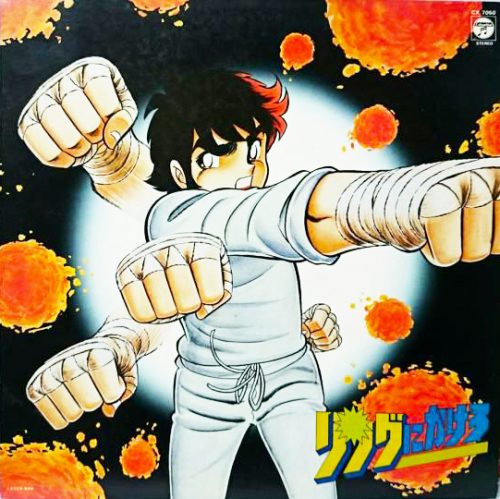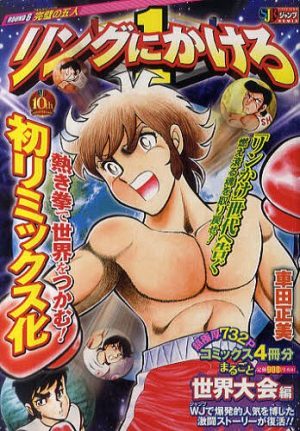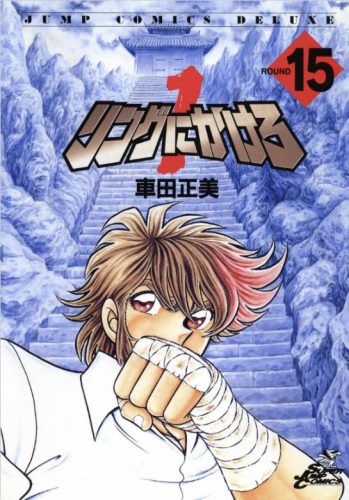
Throughout the 2000s, Ring ni Kakero 1—based on the hit boxing manga by Masami Kurumada (which was in publication between 1979 – 1983) who is internationally known for Saint Seiya—got an anime adaptation shortly covering the Japan tournament, Japan vs USA, The Shadow Organization, and Japan vs the World story arcs. Regardless, the anime does very little to live up to the original manga, and for these reasons we offer 3 equals reasons as to why you should and/or shouldn’t read the original manga.
Contains Spoilers

3. It’s The Manga That Put Shounen Jump on the Map
Many of you international readers can understandably give credit to Dragon Ball, Naruto, or Yuu Yuu Hakusho for the rise of Shounen Jump; or it was your gateway to it. However, what helped pave way for Shounen Jump in its native Japan? As surprising as it sounds, it was Ring ni Kakero. Thanks to this manga, not only was Kurumada able to make Saint Seiya, but it paved way for other hit titles to come these past 3 decades. So if you want the true original modern day Shounen title, Ring ni Kakero is it!
2. For Masami Kurumada fans
The people who are most likely going to appreciate this manga are fans of Masami Kurumada, most notably those who are familiar with Saint Seiya. Though different, they do share some similarities. Kurumada tends to recycle his character designs since he seems them as actors in different roles, so when you see Ryuji the first time, you’re going to instantly recognize him as Seiya, while Jun’s design is later recycled for Jabu. Some of the techniques portrayed are also similar, such as Jun’s Galactica Magnum is a lot like that of Seiya’s Ryuusei Ken.
1. Crazy Action
As an extension to number 2, we promise you’re going to get some insane fights. When you read this manga, you’re probably going to think that Kurumada was on drugs when he made this manga. Yes, we do get the typical punching exchanges like you see in a real boxing match, but it sneaks in some tricks that probably violate the rules to the Marquess of Queensberry. As opposed to throwing a hook, what if your hook could throw a boomerang-like projectile? Or what if you’re uppercut could create a tornado effect? Or what if your punches could generate enough power to knock your opponent out of the arena? So if you want the craziness of JoJo with the explosiveness of Dragon Ball, this manga was the first to do it.
3. You Can Blame This Manga for the Rise of Shounen
Many people don’t like Shounen for a variety of reasons. Their stories tend to drag, it has too many characters, tournament arcs, and all the ridiculousness that comes with it. So if there is any title to blame for all of that, then you can point it all back to Ring ni Kakero. Tournament arcs tend to be a hit or miss, so if you hate tournament arcs, then you can blame it all on this manga.
2. It’s Not a Good Representation of Boxing
When it comes to other boxing manga like Hajime no Ippo, its main appeal is its detailed realism. However, finding other boxing anime and manga titles sharing that same quality is difficult to find and if realism is at the top of your criteria for a boxing manga, then Ring ni Kakero is definitively not what you’re looking for. If you’re familiar with how Prince of Tennis tends to use fantasy elements in its tennis matches, then you’re going to get that with Ring ni Kakero. As opposed to winning with a right hook, trying throwing a right hook that throws something akin to Nash’s Sonic Boom in Street Fighter Zero.
1. Not for the Easily Offended
Some people, notably conservatives, tend to repeat that people get offended easily these days over the smallest things, such as people wearing a MAGA hat, a cartoon frog, or that the OK hand sign means white power, or whatever trolling 4chan comes up with. While we’re not here to talk about that, but what we can say for certain is that the Ring ni Kakero manga is plastered with racial/ethnic stereotypes. If you thoughts G Gundam stereotyped other nations, then you haven’t seen anything yet until you read Ring ni Kakero.
The Italians are portrayed as mobsters, the French are presented as Napoleon era snobbish nobles, and to top it off, the Germans are portrayed as Nazis. As for the Americans, they’re a motley crew made up of a death row inmate, a transgender, a Hell’s Angels leader, the Grand Wizard of the KKK, and ironically, the leader is a jive talking black guy. As for Japan, they are portrayed as modern day samurai warriors that represent old school Yamato Damashii masculinity. If you read this manga, chances are some of you are going to feel offended and run to your nearest safe space, or you’re going to laugh your butt off.
Final Thoughts

Even 35 years after its debut, if you find yourself reading Ring ni Kakero, you’ll probably still find it unique amongst its successors. For hardcore Saint Seiya fans, they’re most likely to appreciate this series the most. Despite being a tribute to Ashita no Joe, it takes it to the next step, and for its time, it was something fresh and appealing. If you read this series in context to when it debuted (and try to forget about Hajime no Ippo for a second), and you have an understanding of how it paved way for Dragon Ball, we’re positive you’ll find some way to appreciate this series despite its racist portrayals of other nationalities.

